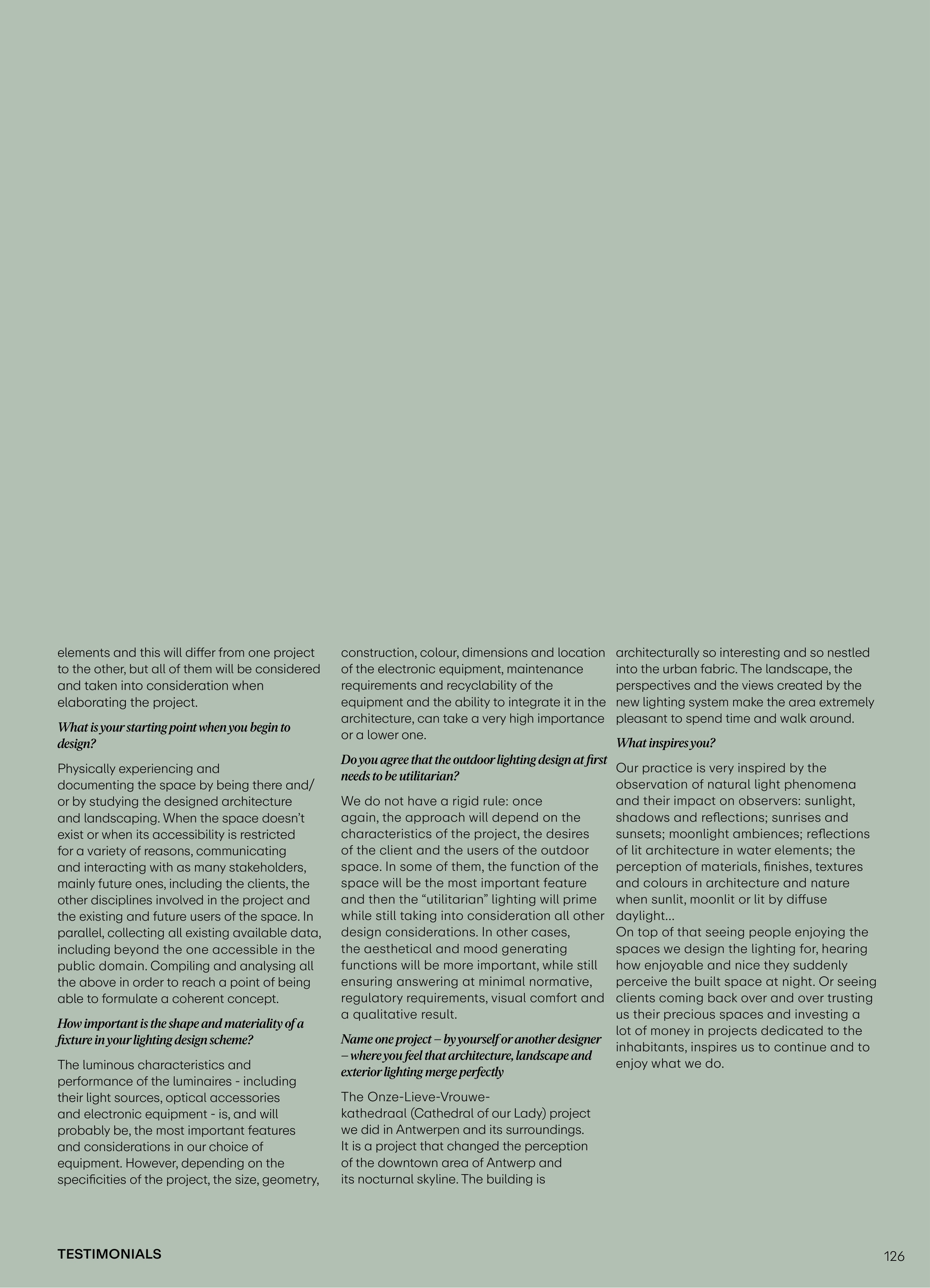elements and this will differ from one project
to the other, but all of them will be considered
and taken into consideration when
elaborating the project.
What is your starting point when you begin to
design?
Physically experiencing and
documenting the space by being there and/
or by studying the designed architecture
and landscaping. When the space doesn’t
exist or when its accessibility is restricted
for a variety of reasons, communicating
and interacting with as many stakeholders,
mainly future ones, including the clients, the
other disciplines involved in the project and
the existing and future users of the space. In
parallel, collecting all existing available data,
including beyond the one accessible in the
public domain. Compiling and analysing all
the above in order to reach a point of being
able to formulate a coherent concept.
How important is the shape and materiality of a
fixture in your lighting design scheme?
The luminous characteristics and
performance of the luminaires - including
their light sources, optical accessories
and electronic equipment - is, and will
probably be, the most important features
and considerations in our choice of
equipment. However, depending on the
specificities of the project, the size, geometry,
construction, colour, dimensions and location
of the electronic equipment, maintenance
requirements and recyclability of the
equipment and the ability to integrate it in the
architecture, can take a very high importance
or a lower one.
Do you agree that the outdoor lighting design at first
needs to be utilitarian?
We do not have a rigid rule: once
again, the approach will depend on the
characteristics of the project, the desires
of the client and the users of the outdoor
space. In some of them, the function of the
space will be the most important feature
and then the “utilitarian” lighting will prime
while still taking into consideration all other
design considerations. In other cases,
the aesthetical and mood generating
functions will be more important, while still
ensuring answering at minimal normative,
regulatory requirements, visual comfort and
a qualitative result.
Name one project – by yourself or another designer
– where you feel that architecture, landscape and
exterior lighting merge perfectly
The Onze-Lieve-Vrouwe-
kathedraal (Cathedral of our Lady) project
we did in Antwerpen and its surroundings.
It is a project that changed the perception
of the downtown area of Antwerp and
its nocturnal skyline. The building is
architecturally so interesting and so nestled
into the urban fabric. The landscape, the
perspectives and the views created by the
new lighting system make the area extremely
pleasant to spend time and walk around.
What inspires you?
Our practice is very inspired by the
observation of natural light phenomena
and their impact on observers: sunlight,
shadows and reflections; sunrises and
sunsets; moonlight ambiences; reflections
of lit architecture in water elements; the
perception of materials, finishes, textures
and colours in architecture and nature
when sunlit, moonlit or lit by diffuse
daylight…
On top of that seeing people enjoying the
spaces we design the lighting for, hearing
how enjoyable and nice they suddenly
perceive the built space at night. Or seeing
clients coming back over and over trusting
us their precious spaces and investing a
lot of money in projects dedicated to the
inhabitants, inspires us to continue and to
enjoy what we do.
126
TESTIMONIALS


